Working with long-piled fabrics – fabrics with a nap – or quilt fabrics, it is essential to pay attention to the direction of that nap or print. With patchwork it can give chaos, if you don’t divide the print direction evenly. Because of the many questions, I will explain how I am working with different fabrics.
With Fleece fabrics, there is a clear front and back. What is not obvious, is which side YOU want to use as front or back. While making hoodies or sweaters, most people will use the side with the nap on the inside of a garment, which will set the smooth side at the front. But I always work the other way around: I am using the side with the nap for the front, and the smooth side for the inside, because the soft effect of the nap will give the garments a special look. That’s a personal choice, but what should you pay attention to?
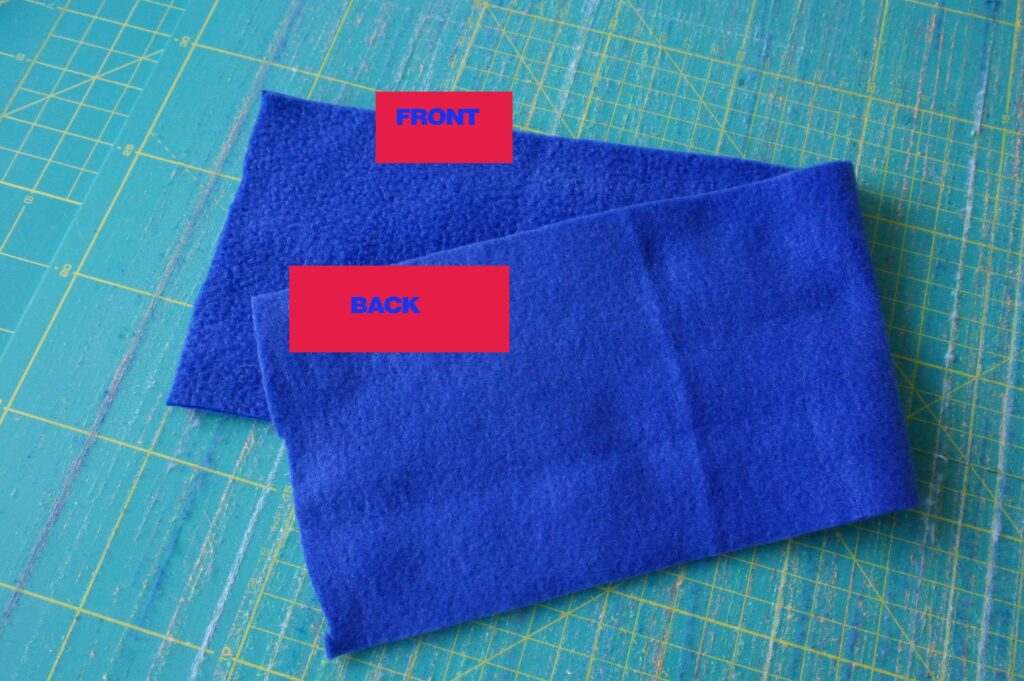
The picture above shows two sides of a Fleece fabric: front and back (my front and back): a clear nap at the front, smooth at the back. The front is darker than the back, which gives you the opportunity to work with different hues, if you mix them.
Making a hoodie with pockets, I will use both front and back on the outside of the hoodie, to get different effects with pockets and lining.
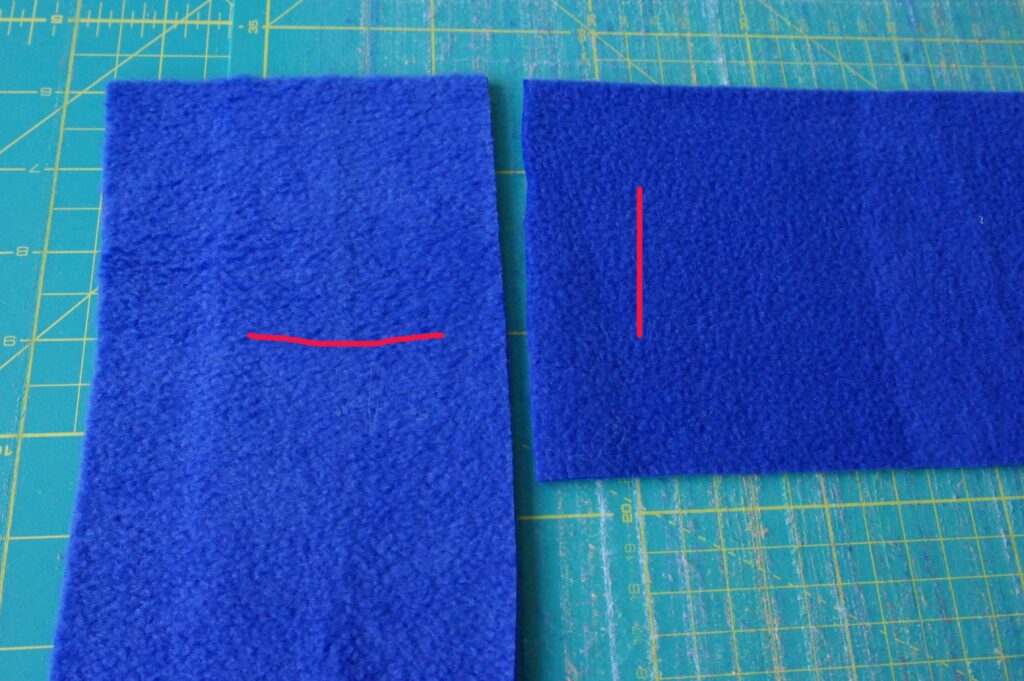
But also the direction of the nap gives quite a difference: place two strips in front of you – one horizontal and one vertical – and you will notice that one looks darker than the other. That is something to consider when making garments: do you want different hues or do you want just one? Placing fabrics in different directions gives you more effect, but also could be more chaotic for some.
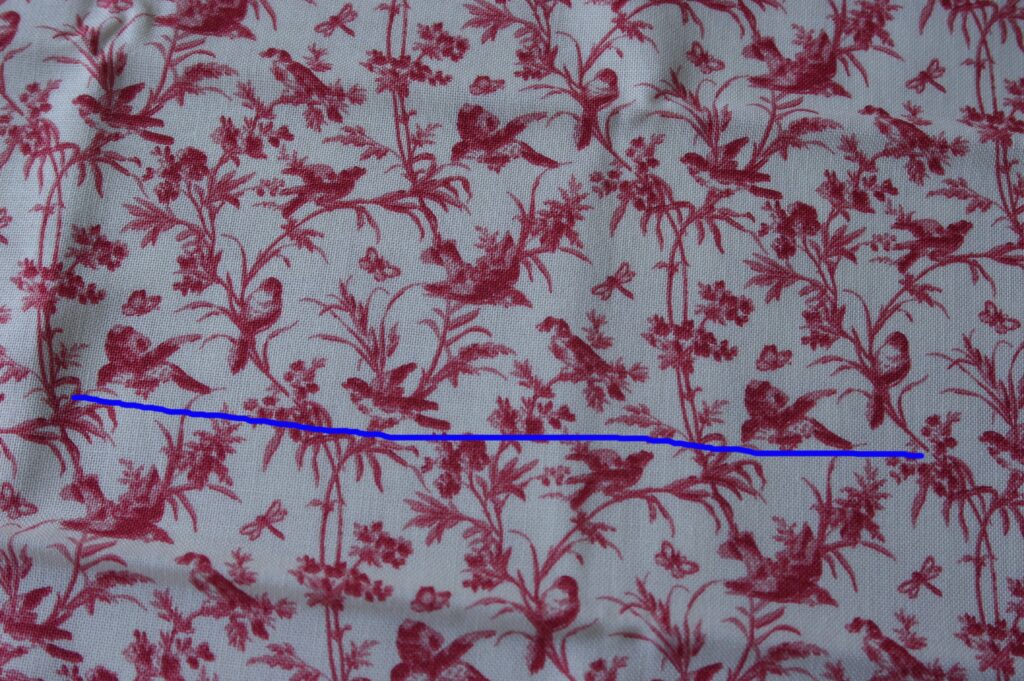
And what about quilt fabrics? A direction of print can be found easily, when you have a fabric with birds, like the one above. All birds are printed horizontally, so using this fabric in one direction in your quilt is calmer for the eyes.
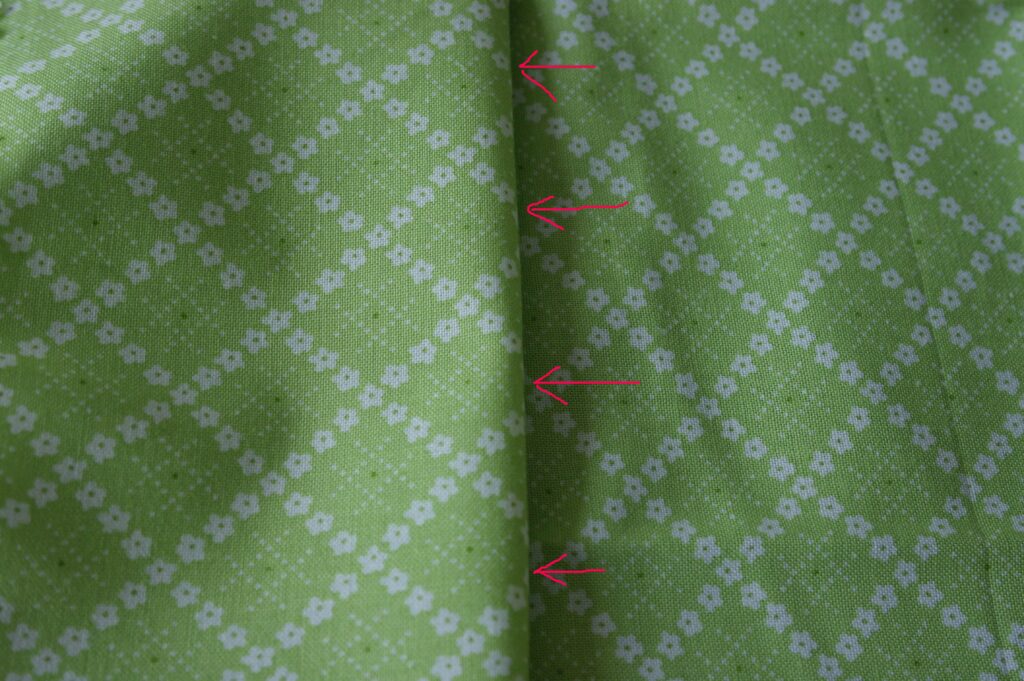
With some fabrics you will THINK that there is no direction in print. Just place them in opposite directions – horizontal and vertical – and try to match both sides. With the print showing above, it doesn’t work. It looks as if the flowers are printed in a square, but actually it is a diamond, which stretches the print ever so slightly, but visible when placing them in opposites directions. It is important to be aware of this effect before cutting strips for a quilt.

The waving pattern of the fabric above has a clear direction: placing them in opposite directions shows a different appearance, which can distort your quilt, or – when using it consciously – gives the right effect.
How do you get symmetry with a print direction?
- When making a block which has a square in the middle, surrounded by 4 strips, cut two strips horizontal and two strips vertical. Sewing them in the right order, the print will point to one direction.
- Cut all 4 strips in the same direction. Placing two strips at the sides and two on top and bottom, gives you symmetry, even if they are pointing in two direction.
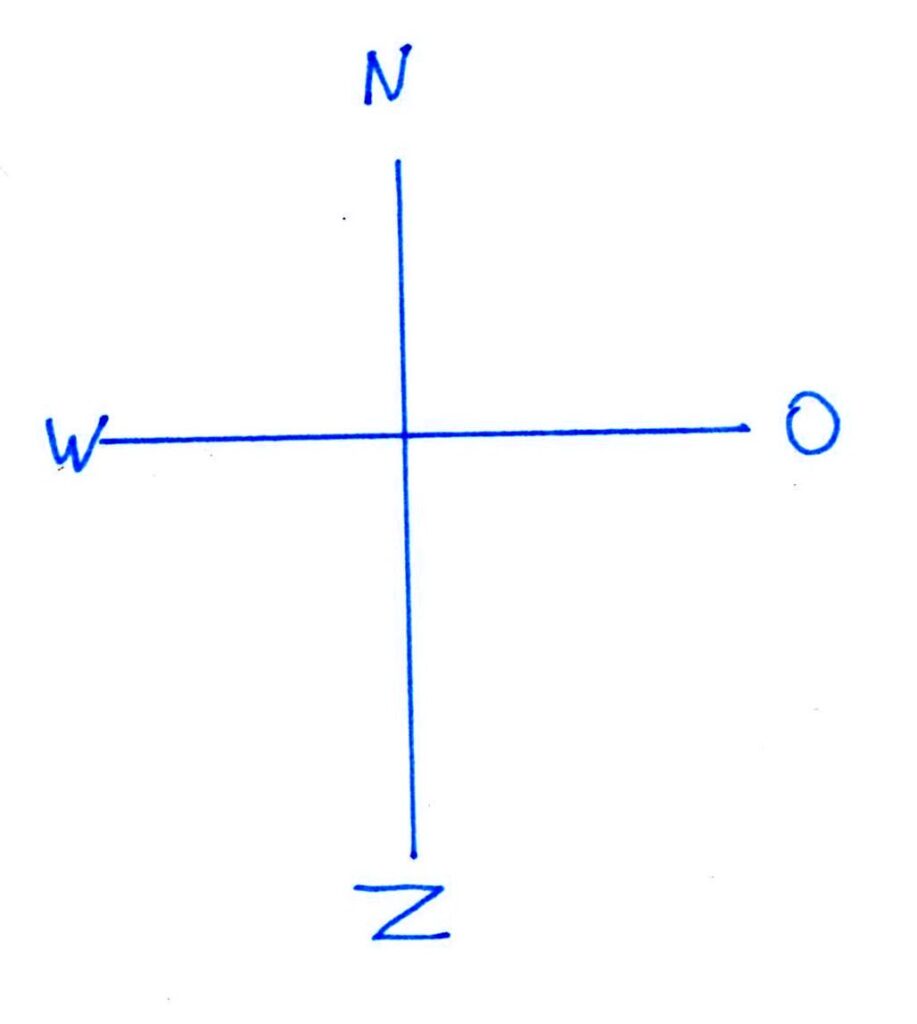 making multiple blocks, divided over a quilt, you can use the North, South, East and Wet directions. Horizontal strips will be placed North and South, vertical strips East and West. Bij het maken van meerdere blokken, die verdeeld over de quilt gemaakt worden, kun je ook uitgaan van de windstreken Noord, Zuid, Oost en West. De horizontale stroken zijn dan Noord en Zuid, de verticale stroken Oost en West.
making multiple blocks, divided over a quilt, you can use the North, South, East and Wet directions. Horizontal strips will be placed North and South, vertical strips East and West. Bij het maken van meerdere blokken, die verdeeld over de quilt gemaakt worden, kun je ook uitgaan van de windstreken Noord, Zuid, Oost en West. De horizontale stroken zijn dan Noord en Zuid, de verticale stroken Oost en West.
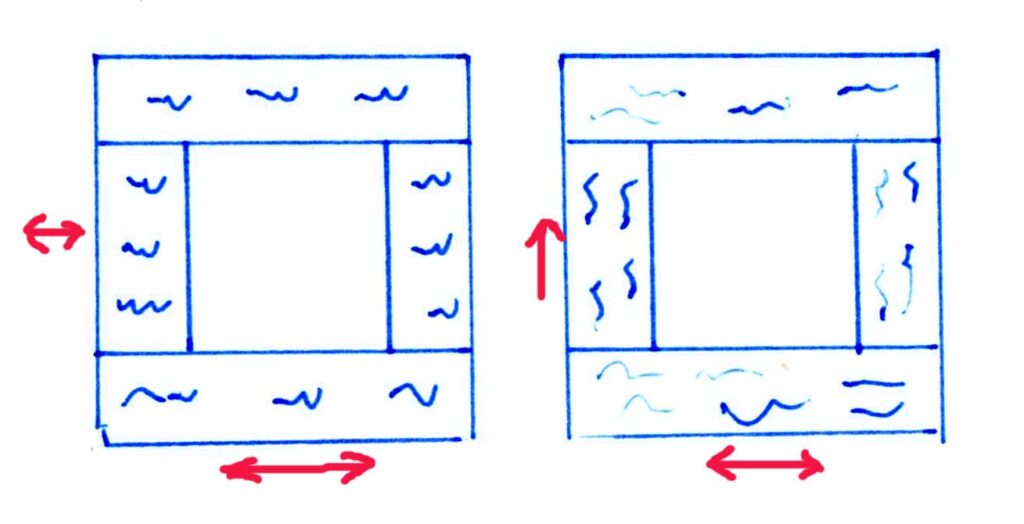 When having 4 blocks in your quilt, a square in the middle, surrounded by four strips per block, it can be assembled in a couple of setting. Either cut 16 strips in one print direction, or 8 horizontal and 8 vertical. The way you will sew these strips to the square gives you the right symmetry, while using the compass as a guide.
When having 4 blocks in your quilt, a square in the middle, surrounded by four strips per block, it can be assembled in a couple of setting. Either cut 16 strips in one print direction, or 8 horizontal and 8 vertical. The way you will sew these strips to the square gives you the right symmetry, while using the compass as a guide.

The drawing above shows a quilt with 4 blocks; each print direction of the strips facing North-South.
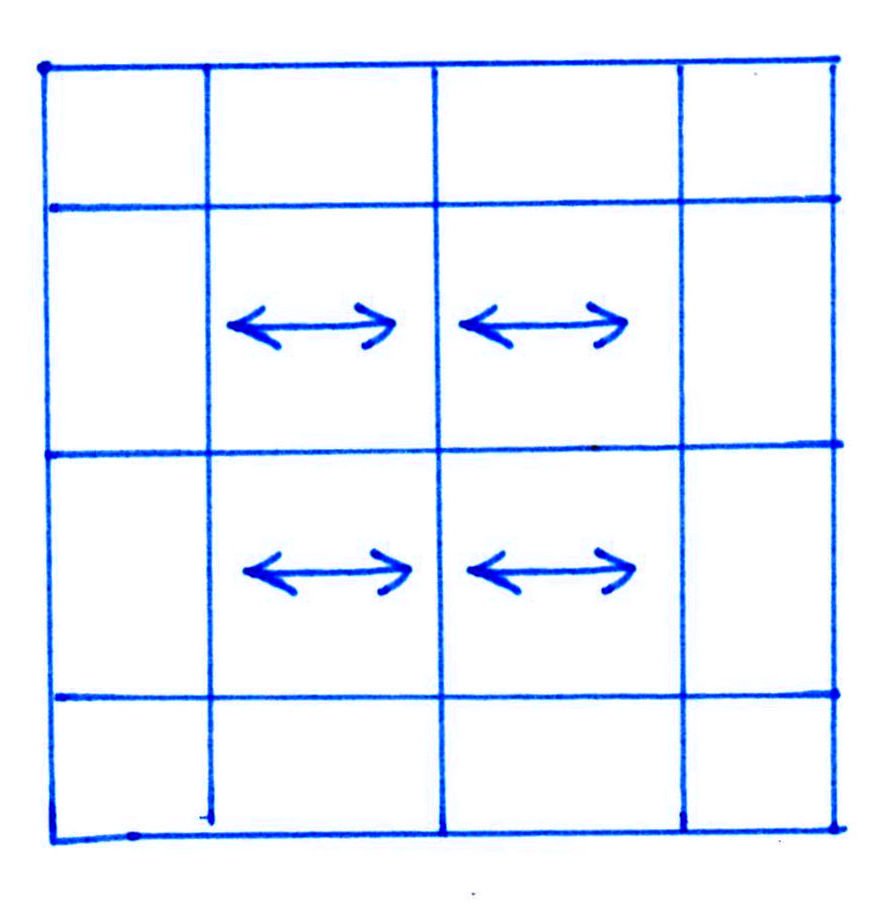
This diagram shows them facing East-West.

And this drawing shows two blocks with strips facing North-South, and two blocks with trips facing East-Wet. So even if not all is facing in the same print direction, there is symmetry.
Just something to be aware of, before you start cutting your fabrics.
Happy stitching
Sylvia Kaptein
Sylvia’s Art Quilts Studio
 BERNINA Corporate Blog -
BERNINA Corporate Blog -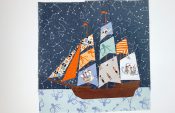

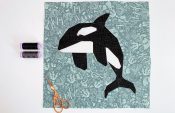
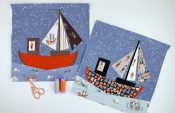
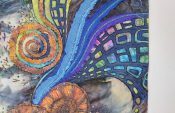
0 Responses